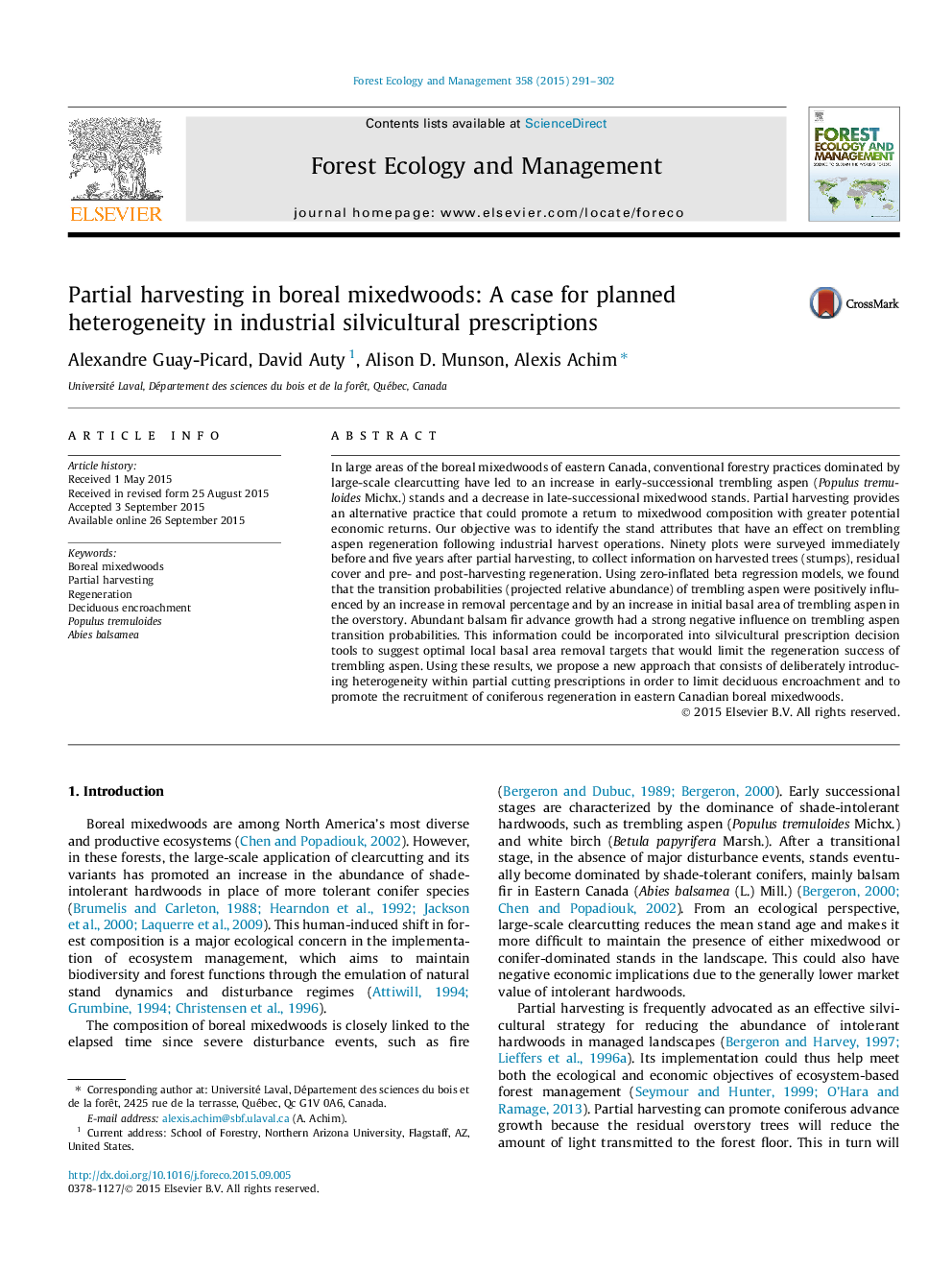| کد مقاله | کد نشریه | سال انتشار | مقاله انگلیسی | نسخه تمام متن |
|---|---|---|---|---|
| 86080 | 159163 | 2015 | 12 صفحه PDF | دانلود رایگان |
• We studied regeneration in the boreal mixedwoods after industrial harvest operations.
• Transition probabilities (or projected relative abundance) were estimated.
• Adjusting the removal proportion could limit the regeneration success of aspen.
• Aspen had little success in the presence of abundant balsam fir advance growth.
• We propose deliberately introducing heterogeneity within partial cut prescriptions.
In large areas of the boreal mixedwoods of eastern Canada, conventional forestry practices dominated by large-scale clearcutting have led to an increase in early-successional trembling aspen (Populus tremuloides Michx.) stands and a decrease in late-successional mixedwood stands. Partial harvesting provides an alternative practice that could promote a return to mixedwood composition with greater potential economic returns. Our objective was to identify the stand attributes that have an effect on trembling aspen regeneration following industrial harvest operations. Ninety plots were surveyed immediately before and five years after partial harvesting, to collect information on harvested trees (stumps), residual cover and pre- and post-harvesting regeneration. Using zero-inflated beta regression models, we found that the transition probabilities (projected relative abundance) of trembling aspen were positively influenced by an increase in removal percentage and by an increase in initial basal area of trembling aspen in the overstory. Abundant balsam fir advance growth had a strong negative influence on trembling aspen transition probabilities. This information could be incorporated into silvicultural prescription decision tools to suggest optimal local basal area removal targets that would limit the regeneration success of trembling aspen. Using these results, we propose a new approach that consists of deliberately introducing heterogeneity within partial cutting prescriptions in order to limit deciduous encroachment and to promote the recruitment of coniferous regeneration in eastern Canadian boreal mixedwoods.
Journal: Forest Ecology and Management - Volume 358, 15 December 2015, Pages 291–302
